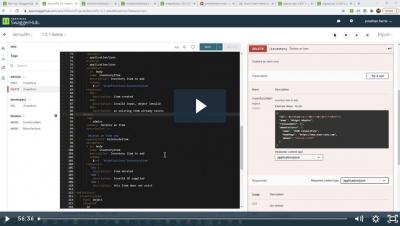Systems | Development | Analytics | API | Testing
API
Better protect your web apps and APIs against threats and fraud with Google Cloud
With web applications and public APIs becoming increasingly important to how organizations interface with their customers and partners, many are turning to dedicated tools that can help protect these assets.
Developing a Kong Gateway Plugin With Go
Developing a Kong Gateway Plugin With Go
This tutorial shows you how to create a custom Kong Gateway plugin with Go programming language. The sample plugin I created adds an extra layer for security between consumers and producers. The way it works is it identifies consumers through a consumer-key from a query string. Without this parameter, they’ll get an error message.
SwaggerHub 101: Learning the Basics
[Online Meetup] Kong Gateway 2.4
How to Automate Service Mesh Observability With Kuma
The more services you have running across different clouds and Kubernetes clusters, the harder it is to ensure that you have a central place to collect service mesh observability metrics. That’s one of the reasons we created Kuma, an open source control plane for service mesh. In this tutorial, I’ll show you how to set up and leverage the Traffic Metrics and Traffic Trace policies that Kuma provides out of the box. If you haven’t already, install Kuma and connect a service.









